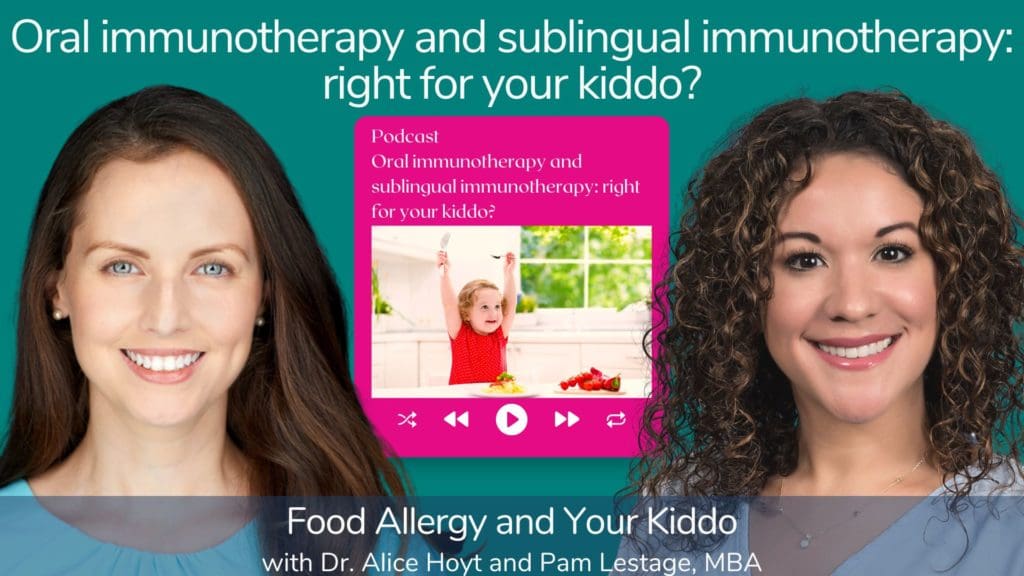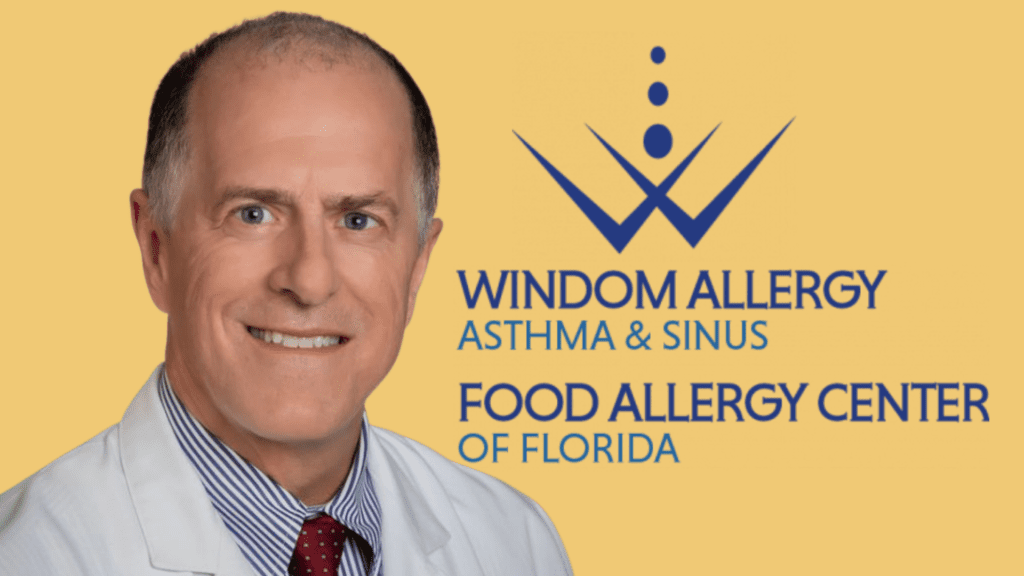If you are one of the millions of American parents whose kiddo has food allergies, you know how much extra effort goes into keeping your kiddo safe while living with this condition. Like many parents, this may cause you much anxiety, and you’ve wished there was a way to help keep your kiddo safe. Until recently, allergists had few therapies to offer patients with food allergies. But now oral immunotherapy (OIT) and even sublingual immunotherapy (SLIT) are becoming more accessible. But what really is OIT and SLIT, and who are good candidates for these treatments?
Scroll down to hear the podcast episode in which Dr. Hoyt discusses OIT and SLIT with her allergist colleague Dr. Hugh Windom.
“What is Oral Immunotherapy (OIT)?”
Oral immunotherapy (OIT) is one method of treating food allergies. It involves gradually exposing patients to the allergen in question. This continued exposure teaches the immune system to tolerate the food. This thereby diminishes the likelihood of having a severe allergic reaction when an accidental ingestion occurs. This accidental-ingestion protection is commonly referred to as being “bite-proof” as the patient is able to ingest a bite of the allergen and not react. Some patients who undergo OIT end up being able to “free-eat,” meaning they can eat as much of the food as they’d like as long as they keep the food in the diet regularly.
The Phases of OIT
The Escalation Phase
The oral immunotherapy process involves having the patient eat gradually increasing amounts of the allergen. Initial dosing is incredibly small and may include multiple tiny doses or one tiny dose. This is called the “escalation phase.” Whether multiple doses or a single starting dose is performed, the dose the patient will begin taking at home the following day is just as tiny as that starting dosing. And that dose is TINY. For example, in peanut OIT, a patient’s first dose may be ~3mg of peanut protein, compared to a peanut containing ~300mg of peanut protein. Doses are ingested daily under strict safety guidelines, and patients return to the allergist’s office every 1-2 weeks or less frequently to increase the amount of allergen. This is called “up-dosing.”
The Up-Dosing Phase
The “up-dosing” phase of oral immunotherapy can last months to sometimes years, depending on multiple medical and non-medical factors. Medical factors may include spacing out the up-dose appointments due to the patients having a reaction or other medical issues going on that could increase the risk of a reaction. Non-medical factors may include the family traveling or the patient having a heavy school or activities schedule that makes attending up-dosing appointments too stressful for a season, which is fine! This comes back to the goals of OIT, such as improved quality of life. Learn more about the goals of oral immunotherapy with this quick video Q&A (#5).
The Maintenance Phase
When a patient reaches the “maintenance” phase of oral immunotherapy the same dose is continued daily, and the patient may be “bite-proof” at this point. This is where allergists’ protocols tend to vary in how long a patient needs to be on the maintenance dose before doing an ingestion challenge. This ingestion challenge will help the allergist determine whether the patient can now tolerate larger amounts of the allergen. This is the gateway into free-eating.
The Tolerance Preservation Phase
Because there is limited data on how long which patients need to stay on maintenance to sustain their newly formed tolerance, allergists’ protocols tend to vary on what a patient’s dosing should look like during this post-challenge phase. Dr. Hoyt refers to this phase as the “Tolerance Preservation” phase of oral immunotherapy.
Learn more about OIT in this course: Oral Immunotherapy: Primer for Parents.
“What is Sublingual Immunotherapy (SLIT)?”
Sublingual immunotherapy (SLIT) follows a lot of the same processes as oral immunotherapy, but there are a few major differences. Instead of oral dosing (meaning the dose is swallowed), sublingual immunotherapy dosing is done under the tongue. This is why it’s called “sublingual” immunotherapy. Also, the safety measures are less robust because there seems to be less likelihood of reaction to SLIT. While sublingual immunotherapy may cause fewer reactions in patients, it also may not result in the degree of tolerance a patient is seeking. Also, most young children are unable to hold the SLIT dose under their tongues, so it rarely is a good option for them.
“What about avoidance – is that still a good management option?”
Absolutely! Avoidance is still a good management plan for patients with food allergies. Many teens and young adults are busy with important school and extracurricular activities that make participating in oral immunotherapy or sublingual immunotherapy difficult, and many older adults have been living with their food allergy for so long that they don’t feel the need to make a change. It’s critical to consider all aspects of OIT, SLIT, and avoidance and to discuss with your allergist your goals as well as the risks and benefits to all approaches to decide the best path for you.
Tune in to this podcast episode in which Dr. Hoyt discusses oral immunotherapy and sublingual immunotherapy with her allergist colleague Dr. Hugh Windom.


Thanks for reading this post “Oral immunotherapy and sublingual immunotherapy – for your kiddo?” Do you have any questions about food allergies? Sign up for our newsletter where you can submit your questions and stay up-to-date on all things food allergy and YOUR kiddo!
Are you in need of an allergist in your area? Check out these allergist finder tools:
AAAAI Allergist Finder: https://allergist.aaaai.org/find/
ACAAI Allergist Finder: https://acaai.org/locate-an-allergist
OIT Allergist Finder: https://acaai.org/locate-an-allergist
Do you have food allergy questions? Have them answered by Dr. Alice Hoyt, Pam, and guests on the podcast!
Submit your questions HERE!
A note from Dr. Hoyt
I have talked about a non-profit…
Pam and I volunteer with the non-profit The Teal Schoolhouse. Its primary program is Code Ana. Code Ana equips schools for medical emergencies like anaphylaxis.
Code Ana’s Online Epinephrine Training Program helps support that goal. Through this program, you will educate yourself while you support this important mission!
A medical emergency response plan is important for everyone at any school. Code Ana’s program Med-E Ready is a comprehensive approach to school-focused medical preparedness. This program guides schools through the process of creating a medical emergency response plan. A response team is also developed! This is one of the most important components of a school’s food allergy policy!
Does your kiddo’s school have Code Ana?
You’ve just read our post “Oral immunotherapy and sublingual immunotherapy – for your kiddo?” Remember, Dr. Hoyt is an allergist, but she isn’t your allergist, so talk with your allergist about what you’ve just learned!

